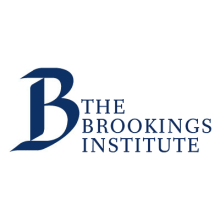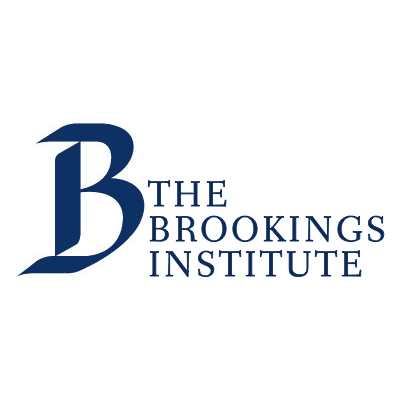Implementing robust macroprudential policy—addressing threats to financial stability beyond those that were the focus of safety and soundness on an institution-by-institution basis or of investor protection market-by-market—was a constructive outcome of the legislative and policy response to the global financial crisis of 2008-09.
In the U.S., the Dodd-Frank Act of 2010 strengthened the hand of the Federal Reserve as it addressed the systemic risks in banks and bank holding companies, including those emanating from institutions that were “too big” or “too systemic” to fail. It also created two new institutions to look across the fragmented regulatory landscape to drive macroprudential policy addressing risks outside of banks: the Financial Stability Oversight Council (FSOC), which is chaired by the secretary of the Treasury and includes the heads of federal regulatory bodies, is charged with identifying and responding to risks to the financial stability of the United States, and the Office of Financial Research (OFR), which was created to support the work of FSOC through research and data gathering. FSOC’s powers are limited—it can designate systemically important institutions, and it can make recommendations to constituent regulators—but even those authorities have been infrequently used. The structures set up by Dodd-Frank have not led to consistent and effective macroprudential policies in the U.S.
The Biden administration, under the leadership of Janet Yellen at Treasury, intends to drive more active macropru policies, but at this still early stage of the administration, results are not yet evident. It is urgent they get on with the job. First, the “dash for cash” of March 2020 as the pandemic shutdown set in revealed a number of weaknesses in market-driven financial intermediation that required unprecedented and massive central bank intervention to prevent a total breakdown of the financial system that would have made an already dire economic situation much worse. We had hints of those weaknesses before the pandemic, but they became considerably more visible under stress. Moreover, the actions of the Federal Reserve and other central banks to counter their effects raise the possibility that private risk taking will be distorted by the expectation of future interventions in stress situations. The authorities need to move while memories are fresh and political support for corrective steps is at its highest.
The second reason for urgency is the current economic and financial situation. If the economic and financial situation evolves as seems to be expected in financial markets, credit will flow, and financial markets will continue to serve the needs of the economy. But the current situation is replete with fat tails—unusually large risks of the unexpected which, if they come to pass, could result in the financial system amplifying shocks, putting the economy at risk. At a recent FOMC meeting, the Board of Governors staff characterized financial vulnerabilities as “notable,” reflecting some asset valuations, leverage in corners of the financial system, and persistent structural issues.[1] Moreover, these vulnerabilities have arisen in the context of truly unprecedented circumstances, making it difficult, if not impossible, for policymakers or market participants to predict the future with confidence. There’s the virus, of course, and the public and private response to its evolution. In addition, fiscal policies are raising Federal debt-to-income to record peacetime levels and a new monetary policy framework has yet to play out in practice. Meanwhile, inflation has spiked to the highest levels in many years. Yet market participants appear to have priced in very low interest rates for a very long time even as the economy recovers and, judging from risk spreads and equity prices, are quite confident that higher debt levels can be serviced and sustained—even though a disproportionate increase in private debt has been among lower-rated business borrowers.[2]
Well-functioning U.S. financial markets are essential for well-functioning global finance. We saw all too clearly in 2008 how disruptions in U.S. markets can trigger a global financial meltdown and recession. Building resilience in the U.S. to risks that could readily materialize is essential to building confidence in a sustained global recovery from the pandemic. New legislation would be helpful in a number of dimensions—especially in reworking how FSOC and OFR function and making sure they are supported by a more prominent financial stability focus and analytical capability in constituent agencies. But U.S. agencies already have the tools to address many of the vulnerabilities that have lingered since the GFC and became so evident in March of 2020, and some new ones that have emerged more recently.[3]
Here’s a checklist of actions that do not require legislation. Notably, it is not a menu from which to pick a few “dishes” to make a macropru meal—all of these things should be addressed, and promptly.
Banking
The resilience of the banking sector was greatly strengthened after the Global Financial Crisis (GFC) by tightened and reformed capital requirements, stress tests of capital adequacy, liquidity requirements, and greater scrutiny of bank risk-management practices, with extra requirements in each area for systemically important banks whose failure would have significant knock-on effects. But more can be done to build resilience in banks and in securities markets where banks intersect with nonbank finance.
A very serious amplifier of stress in the March 2020 dash for cash was the counterintuitive and counterproductive behavior of Treasury securities prices, which fell, rather than rose, in the midst of a flight to liquidity and safety. Dysfunction in the Treasury market spills over in many ways to the broader financial markets and the economy since Treasuries are relied on for liquidity by market participants, for risk management, and as a pricing reference point. There were a number of contributors to this behavior, but one was the reluctance of private dealers, the largest of which are subsidiaries of systemically important bank holding companies, to flex their balance sheets to pick up the Treasury securities being offered in the market. The dealers were especially constrained by the risk-insensitive leverage ratio applied to systemically important bank holding companies, until the Federal Reserve temporarily exempted deposits at the Fed and Treasuries from its calculation. That exemption has lapsed, and with continuing Fed securities purchases, deposits at the Fed are a growing threat to making the leverage ratio salient again, which would constrain dealer market-making appetite. The Federal Reserve should permanently exempt deposits at the Fed from calculation of the leverage ratio.
This exemption, however, should not be allowed to reduce the capital required of banks, especially systemically important banks. There are a number of ways to keep this from happening, but one I favor is to raise risk-based requirements a bit on average through the cycle by activating the countercyclical capital buffer (CCyB). The Fed’s current practice is to leave this at zero unless it has identified the risk environment as already elevated. In this, it differs from many other authorities globally, who have targeted a positive CCyB in a normal risk environment, which enabled them to release that capital to back lending when the Covid-related shut down hit.
The argument for an active CCyB has been strengthened by experience in the pandemic. Evidence from both the U.S. and EU is that banks are reluctant to dip into their regulatory capital buffers to make loans under stress out of concern about market reactions and about supervisory constraints on earnings distributions. Studies have shown that banks with less headroom over buffers tended to lend less in the pandemic than banks with more headroom.[4] The beauty of the CCyB is that once released, it is not part of a regulatory capital buffer and is more available for use. Moreover, the recent changes to the Fed’s stress tests and capital requirements, including substituting a “stress capital buffer” derived from stress test results for elements of the capital stack, are likely to make capital requirements procyclical; adding an actively managed CCyB would counter this adverse macroprudential outcome.
The evident reluctance of banks to dip into regulatory buffers under stress suggests a reasonably sizable CCyB in “normal times” to release under stress would be a helpful countercyclical measure from a macroprudential perspective. The Financial Policy Committee at the Bank of England has established two percent as its target CCyB in a standard risk environment, twice what many other macropru authorities have set, in part by shifting capital from other elements of the stack.
The Federal Reserve should make the CCyB positive in normal risk environments and then manage it actively as risks build or materialize. As it implements a CCyB, the Fed should consider the appropriate level in the context of sterilizing a potential release of capital from adjusting the leverage ratio and the composition of the overall capital stack that would best support the resilience of the financial system and the economy.
Market-based finance
Credit has increasingly shifted to nonbank channels, especially to markets, responding to innovation and to regulatory arbitrage as bank regulation tightened. But elements in nonbank finance share the leverage and maturity and liquidity transformation characteristics of banks, making them also vulnerable to runs and fire sales that tighten credit and amplify business cycles. In many respects, however, vulnerabilities in market-based finance are harder to deal with than they are with banks. They are spread over many types of institutions and markets, subject to multiple regulators—and some parts are very lightly regulated, if at all. Market-based finance is global, facilitating arbitrage across borders and necessitating a globally agreed approach to regulation. And rapid technological change produces a constantly evolving set of instruments and players. Still, tools are available to address a number of vulnerabilities and the centrality of U.S. markets to global markets means that the U.S. should lead the effort.
As noted, well-functioning U.S. treasury markets are a critical element in keeping both bank and nonbank financing channels operating well. Leverage ratio reform is a necessary but not sufficient condition to bolstering Treasury market liquidity. In addition, the Treasury and the Fed should examine the costs and benefits of mandating central clearing for Treasuries and repos, which might free up dealer capital that would be available to be used for market making.[5] And the agencies need to gather and publish more complete data on market transactions to help both regulators and market participants better understand and anticipate market dynamics.[6]
Even with greater private-sector market making, circumstances could arise in which the Federal Reserve would need to step in to preserve well-functioning Treasury securities markets. To that end, backstop standing repo facilities for foreign official holders of Treasuries and for a wide variety of private market participants would put structures in place that could fill that role in a well-anticipated and transparent fashion. In that regard, the Federal Reserve’s recent announcement of two such facilities—one for foreign official institutions and another for dealers—was welcome.
But the repo facility for private parties is limited to the primary dealers and, over time, some depository institutions. To better guarantee Treasury market functioning, the Federal Reserve needs to design a repo facility that is available to a variety of large participants, like hedge funds and other leveraged investors that are playing an increasingly important role in the market. Such an extension would raise issues of counterparty risk and distortions to risk-taking incentives among lightly regulated entities; those can be dealt with through varying haircuts and by imposing a small ex ante fee on lightly regulated entities with access to the facility, but other approaches may also work.
Several types of open-end funds faced very large redemptions in March, including both money market funds and corporate bond and loan funds; to meet those demands, funds turned in part to selling the Treasuries they held for liquidity purposes, so these redemptions disrupted Treasury, corporate bond, and commercial paper markets. The scale of the redemptions is not surprising. Many mutual funds offer their investors much greater liquidity—an ability to redeem by tomorrow at tonight’s closing price—than the liquidity of the underlying securities they hold, which often trade in illiquid markets or simply don’t trade at all, like commercial paper. This mismatch creates a first mover advantage—an incentive to get out while the fund has Treasuries to sell—before redemptions by other investors force fire sales of less liquid assets, depressing prices. The SEC must change regulations to align the liquidity offered investors with the liquidity of the underlying assets in the fund. There are a variety of ways to do this—and the choice for money market funds might differ from the best choice for bond funds. Swing pricing forces early redeemers to pay the price of the liquidity they are getting; where that isn’t possible, as is argued for money market funds, alternatives may work to properly price liquidity under stress, like penalizing redemptions under some circumstances or holding back a portion of the investment.
Another source of elevated demand for liquidity in March 2020 arose from initial margining at central counterparties in derivative and securities markets. According to users, a lack of transparency and predictability about margining methodologies contributed to unexpected demands for cash during the “dash for cash.” But in addition, margin requirements rose substantially as markets became much more volatile. From the perspective of the clearinghouses, this made good sense, and in fact central counterparties remained functioning and viable during an extremely stressful market episode. But here is a case of the micro and macroprudential impulses in conflict as the interest of each clearinghouse added to overall market stress. The CFTC and the SEC should draw on the systemic perspectives of the Fed and Treasury to make margins in CCPs less procyclical with more through-the-cycle methodologies.
This is a formidable list—and I could have added more. Much of it is already under consideration in the U.S. and in global groups, like the FSB. Each element will draw opposition from private parties fearing added costs and counting on intervention from the fiscal and monetary authorities to contain the next market crisis. All of it will require a careful balancing of costs and benefits—but most explicitly and importantly taking account of the costs to society, beyond the costs to market participants, of repeated episodes of financial instability.
Other jurisdictions
The risk environment in the financial markets of many other advanced economies is quite similar to that facing the U.S. Asset prices are elevated and leverage in some sectors has ballooned as market participants count on low interest rates persisting for a very long time. But uncertainties abound as the global economy emerges from a global pandemic after application of unprecedented monetary and fiscal policies. And, until the U.S. raises its macropru game, they are vulnerable to disruptions emanating from U.S. markets.
Many authorities outside the U.S. have utilized a wider array of macropru tools than has the U.S. Given the risk environment, now is the time to make sure domestic institutions and markets would be resilient to severe shocks. Where requirements were adjusted or eased in response to the onset of the pandemic, they should be restored to former settings now that economies are recovering and credit is flowing readily. For example, CCyBs cut in March 2020 to encourage bank lending should be raised as quickly as is consistent with the commitments and forward guidance given when the reductions were announced. Where the “dash for cash” revealed new vulnerabilities that can be addressed in individual jurisdictions, actions should be taken to build resilience—for example, if the margining at CCPs and the behavior of highly leveraged investors in domestic sovereign bond markets amplified stress. Where effective remediation is not possible in global markets without the participation of the U.S., other authorities should work closely with U.S. authorities in international fora to build consensus around best practices that can be implemented globally, including in the United States.
[1] Darrell Duffie highlighted the potential for central clearing to economize on dealer capital. https://www.brookings.edu/research/still-the-worlds-safe-haven/
[2] Notably, the recommendations of the G-30 group on Treasury market functioning are broadly aligned with those of the Task Force. https://group30.org/publications/detail/4950
[3] https://www.federalreserve.gov/econres/feds/un-used-bank-capital-buffers-credit-supply-shocks-at-SMEs-during-the-pandemic.htm. And for similar findings away from the U.S.: https://www.bis.org/bcbs/publ/d521.pdf.
[4] https://www.federalreserve.gov/newsevents/pressreleases/monetary20210818a.htm
[5] https://www.ft.com/content/32a57864-d983-46b0-bbfa-85fd2d2361e5
[6] Much (though not all) of what follows is based on the recommendations of a Chicago Booth-Brookings Task Force on Financial Stability that I co-chaired. https://www.brookings.edu/research/report-of-the-task-force-on-financial-stability/. I have also drawn on my talk to the Kansas City Fed’s Jackson Hole symposium. https://www.brookings.edu/research/building-a-more-stable-financial-system-unfinished-business/
Related Content
Task Force on Financial Stability: Report release




